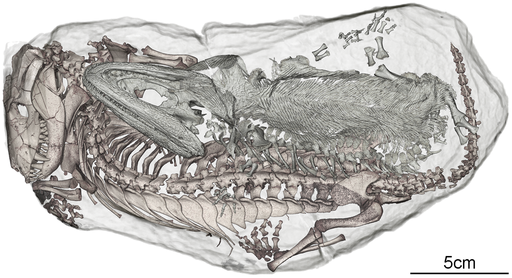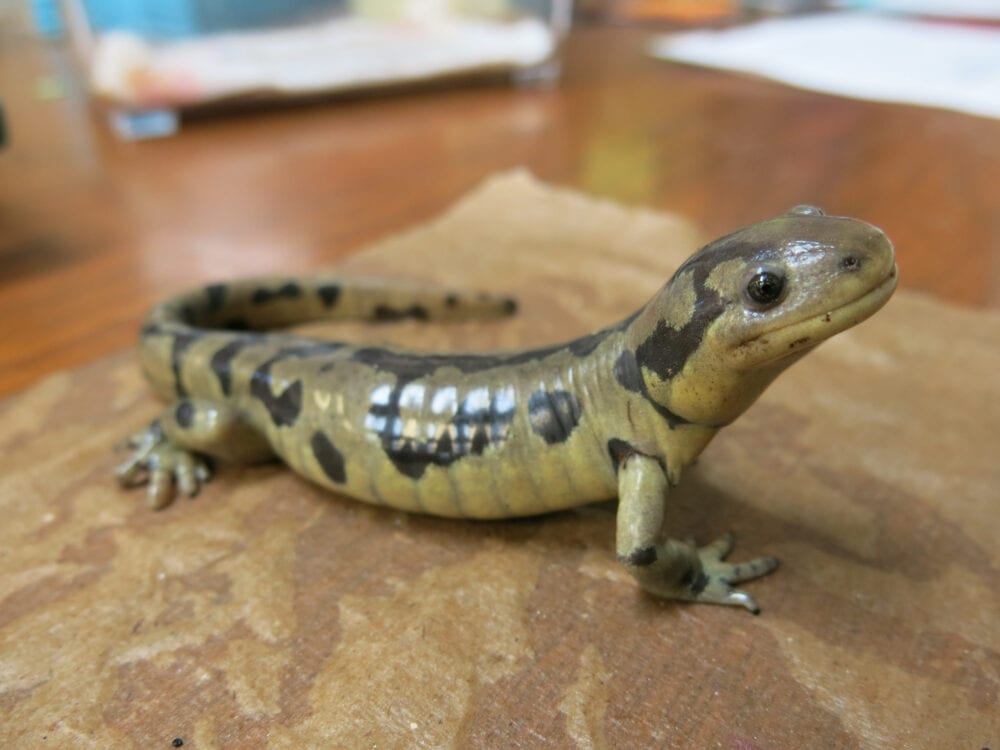Expanded version of the article printed in Nature Notes No. 4, 2017
By Dr. Ellen A.G. Chernoff and Jennifer Macke
Tiger salamanders are common on the Pajarito Plateau and throughout northern New Mexico. Because they live underground, we rarely see them. The underground parts of our world are one of our “final frontiers”; we know very little about what goes on down there!
Tiger salamanders in captivity are very bold and interactive with humans. This interaction may be based on a learned association of humans with food, but it might also be more instinctive: in nature, tiger salamanders interact with other mammals.
It’s well documented that tiger salamanders utilize rodent burrows. One of the best-documented examples is the presence of tiger salamanders in prairie dog towns (Shipley et al., 2006; Kretzer and Cully, 2001). In this setting, tiger salamanders are often among a variety of small vertebrates sharing the prairie dog burrows. The types of mammalian burrows used by tiger salamanders also include those of pocket gophers, ground squirrels, pocket mice, and deer mice (Shipley et al., 2006; Hickman, 1977; Semonsen, 1998; Loredo et al., 1996; Richardson et al., 2000). Tiger salamanders need to den deep in the earth to avoid dry, hot summers and cold winters, so it is not surprising that they occupy burrows.

More interesting are cases in which tiger salamanders have been shown to actually interact with resident mammals. The paper that first brought this phenomenon to our attention was Semonsen, 1998, in which multiple California tiger salamanders were found hibernating with a ground squirrel. They were not only in the same burrow chamber, but some salamanders were found underneath the ground squirrel when a fiber-optic light was used to examine the burrow and the squirrel awoke.
Another type of interaction between a tiger salamander and a small mammal, a pocket gopher, was described by Hickman 1977: “[the pocket gopher was] at the end of a tunnel, apparently to begin excavating, only to find a tiger salamander at rest. The pocket gopher picked the salamander up by the mid-dorsal skin with the incisors, turned, and deposited the animate obstruction 0.6m away from the plug. The pocket gopher then returned to the plug to begin excavating. The salamander did not appear agitated or physically harmed” (Hickman, 1977).
Larger scale experimental studies reported juvenile and adult California tiger salamanders in occupied ground squirrel burrows (Loredo et al., 1996). Of 57 burrows included in the study, 68% were “unambiguously occupied” by both ground squirrels and salamanders.
The infrared image video clip below shows a tiger salamander in a burrow with a deer mouse in South Dakota. The salamander does not seem to mind being stepped on!
Tiger salamanders also dig their own burrows in nature, at least for short-term use. The excavation prowess of tiger salamanders has been studied in the lab and can be confirmed by any keeper who has watched these pocket rototillers destroy terrarium landscaping. The video below shows one digging its own burrow in a mole hill (Posted by Kalvin Knaggs, Manitoba, Canada, 2014). Even when digging on their own, they are said to dig mainly in disturbed soil (as they have no claws). They most often dig in ground loosened by burrowing mammals, as in the video, so mammal burrows are very important to tiger salamander habitat.
Denning with mammals may be an ancient practice for amphibians. In 2013, imaging was performed on an unusual fossil from the early Triassic, about 250 million years ago (Fernandez et al., 2013). It was found in South Africa, which was part of Gondwanaland at that time. A preserved burrow was found to contain a fossilized Temnospondyl amphibian curled up alongside an apparently estivating therapsid mammal forbear. This does make us wonder whether the salamander-mammalian association has ancestral roots.

Do the tiger salamanders here on the Pajarito Plateau live together in harmony with our local gophers, ground squirrels, and mice? Based on other examples, it seems very likely. Our dry terrain forces many animals to seek moist habitats underground, and rodent tunnels afford shelter to a wide variety of other species, including our common-but-rarely-seen tiger salamanders. We can only speculate on how the salamanders might interact with other burrow residents.
References
- Fernandez V, Abdala F, Carlson KJ, Cook DC, Rubidge BS, Yates A, et al. (2013) Synchrotron reveals early Triassic odd couple: injured amphibian and aestivating Therapsid share burrow. PLoS ONE 8(6): e64978
- Hickman GC (1977) Burrow system structure of Pappogeomys castanops (Geomyidae) in Lubbock County, Texas. Amer Midland Naturalist 97:50-58
- Kretzer JE, Cully Jr JF (2001) Effects of black-tailed prairie dogs on reptiles and amphibians in Kansas shortgrass prairie. Southwestern Naturalist 46:171-177
- Loredo I, Van Vuren D, Morrison ML (1996) Habitat use and migration behavior of the California tiger salamander. J Herpetology 30:282-285
- Richardson JS, Klenner W, Shatford J (2000) The tiger salamander in British Columbia: an amphibian in an endangered desert environment. In “Proceedings of a Conference on the Biology and Management of Species and Habitats at Risk”, Kamloops, British Columbia, edited by LM Darling
- Semonsen, VJ (1998) Ambystoma californiense (California tiger salamander) survey technique. Herpetol. Rev 29:96
- Shipley BK, Reading RP (2006) A comparison of herpetofauna and small mammal diversity on black-tailed prairie dog (Cynomys ludovicianus) colonies and non-colonized grasslands in Colorado. J Arid Environ 66:27– 41

